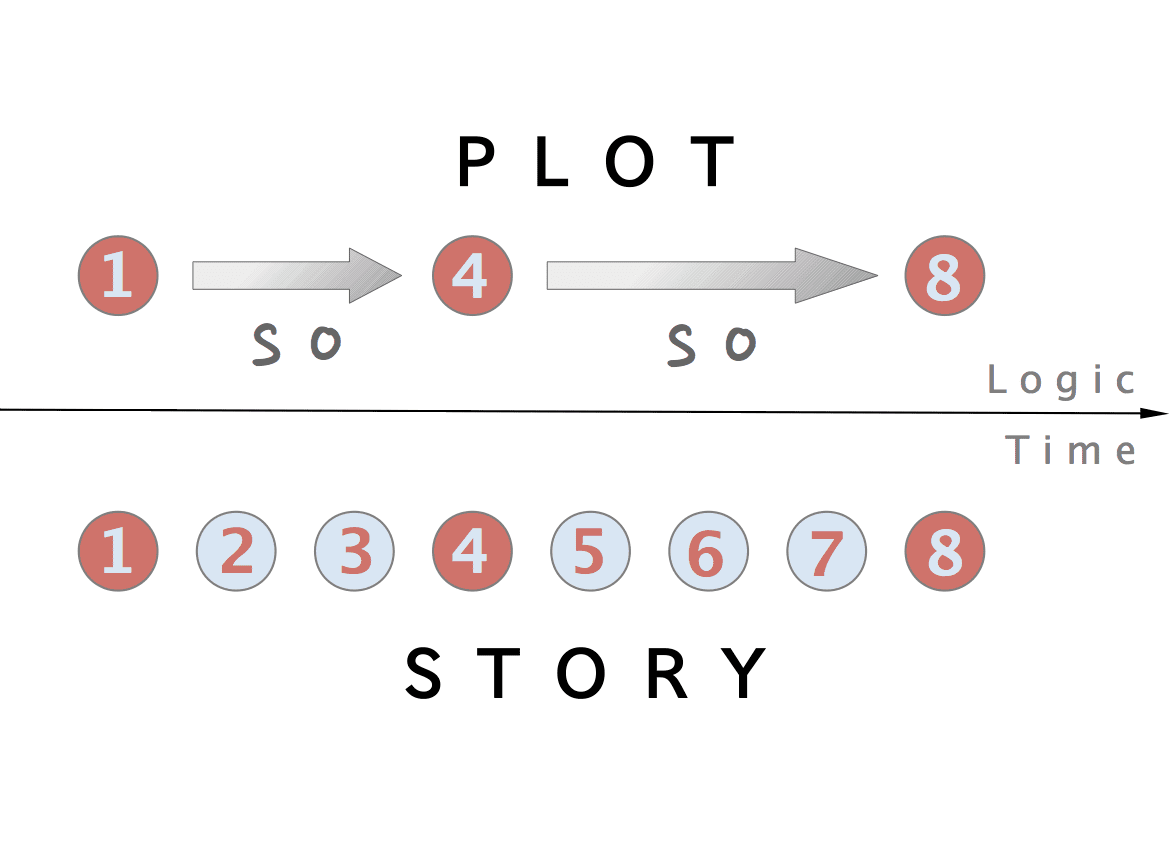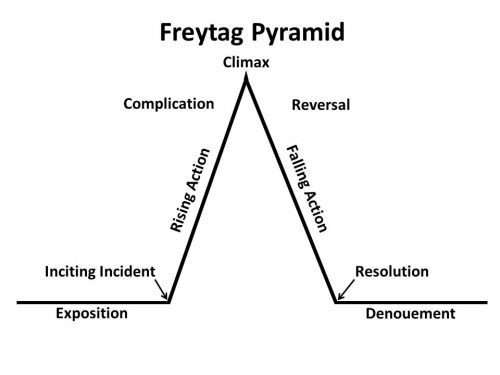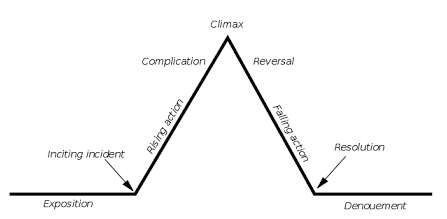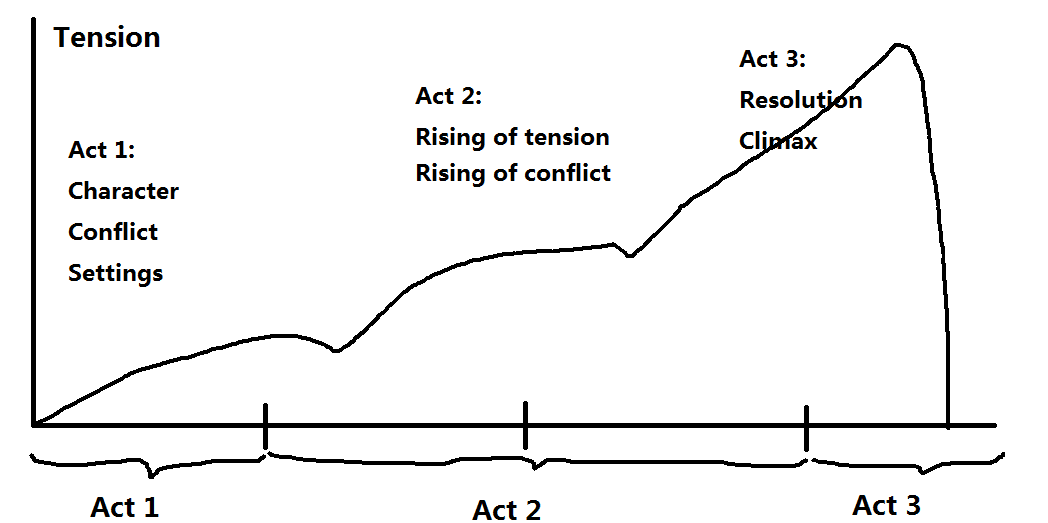We know what you’re thinking: “I’m pretty sure I know what a plot is.” And we’re here to tell you that you might not be as sure as you think.
We’ll start with the basics: a plot is a group of events in chronological order that make up a story.
The definition of plot is the story or series of events that make up a literary work, typically presented in chronological order.
The plot is the sequence of incidents that happen to your characters. When you’re writing a novel, it’s important to have an idea of what happens and why.
There are many ways to create plot twists without being too predictable – one way is by making things difficult for your protagonist by sending them on a journey where they encounter challenges before reaching their goal.
Another way to add suspenseful elements and unexpected turns into your novel is by adding conflict with other characters or forces outside the protagonist’s control.
WHAT IS A PLOT
What Is a Plot?
Plot is a term that has had many different definitions over the years. Plot can be defined as a series of events, in any form of art, especially novels or short stories.
In order to fully understand the plot, it is important to view it from all angles and dissect its meaning.
Various writers have their own unique views on what constitutes a plot and how they are written.
At the heart of every memorable story lies a well-crafted plot, the backbone that guides us through a narrative’s twists and turns.
It’s the sequence of events that hooks readers from the get-go, compelling them to turn the page.
We’ll jump into the components that make a plot tick and why it’s crucial to storytelling.
Stick with us to unravel the elements that transform a simple story into an unforgettable journey.
The Importance Of A Well-crafted Plot
A plot is the backbone of any gripping film or novel – it’s what keeps an audience enthralled from start to finish.
It’s the roadmap that guides viewers through the twists and turns of the narrative, ensuring that they’re constantly engaged and curious about what’s coming next.
Without a solid plot, a film risks becoming a series of disconnected scenes that fail to evoke emotion or interest.
Audiences crave stories that make sense, that challenge them, and that eventually lead to a satisfying journey through the characters’ lives.
A well-crafted plot draws on several key components – tension, pacing, and structure.
Together, these elements weave a cohesive and compelling tapestry:
- Tension builds as conflicts arise and characters face obstacles.
- Pacing determines the rhythm and flow of the story, keeping viewers hooked.
- Structure provides the framework that holds the entire narrative together.
For filmmakers, understanding the mechanics of plot construction is crucial to crafting a successful film.
Movies like The Godfather and Inception are prime examples of films where a meticulously planned out plot has resonated with audiences for years, largely due to their masterful storytelling.
Our job as storytellers is to create plots that are both logical and unpredictable.
These are the kinds of stories that captivate audiences and stand the test of time.
Through careful plotting, we ensure that every scene, every line of dialogue, and every character development feels necessary and impactful.
In the filmmaking community, we recognize the power of a plot that can both entertain and provoke thought.
The audience’s emotional journey hinges on the plot’s ability to connect individual story elements into a greater, unified narrative.
A well-crafted plot is the difference between a forgettable movie and one that remains etched in our minds long after the credits roll.
Components Of A Plot
A plot constitutes multiple interlinked elements that drive the narrative forward.
Delving into the distinct aspects, we recognize several core components that are essential in crafting a compelling story.
Exposition sets the stage for the story, introducing characters, settings, and initial situations.
Here, viewers begin to form their understanding of the world and the conflicts that reside within it.
Rising action builds upon these conflicts – the dramatic escalations force characters into challenges that reveal their depth and complexities.
During this phase, viewers witness the characters facing obstacles that stir the audience’s anticipation and investment in the narrative.
Climax represents the peak of the story, the moment of highest tension and the turning point of the conflict.
It’s here where characters encounter the ultimate showdown or revelation.
In Jaws, the sheer audacity of the characters choosing to confront the titular menace encapsulates a thrilling cinematic climax.
Falling action follows with events that lead towards the resolution, unraveling the aftermath of the climax.
Characters must deal with the consequences of their actions as the story begins to draw towards a close.
Resolution ties up loose ends, providing closure to the story arcs.
Every choice and event comes to a head, resulting in a satisfactory or sometimes ambiguous ending to the plot.
To encapsulate the storytelling essence, think of the plot as:
- The heartbeat of the narrative,
- The framework that holds together the characters’ development,
- A reflection of thematic elements through action and reaction.
Undoubtedly, the interplay of these components – exposition, rising action, climax, falling action, and resolution – creates the spine of any memorable plot.
They’re not a rigid template but instead serve as guideposts that can be adapted to the unique rhythm of each story.
In contemporary cinema, movies like The Matrix exhibit these plot components with nuanced execution, ensuring that the story unfolds with an engaging pace that grips viewers from start to finish.
We understand the importance of each element and how it can be utilized to create stories that resonate deeply with audiences, leaving them with a lasting impression.
Introduction To Exposition
As we jump into the anatomy of narrative structure, it’s essential to understand the role of the exposition.
This foundational component sets the stage for the action that follows.
It provides the audience with the crucial background information needed to fully engage with the story.
Character introductions, setting details, and historical context are all weaved into this initial phase to ground viewers in the film’s universe.
Consider The Matrix – the exposition brings us into a cryptic world where reality is not as it seems.
We learn about Neo’s mundane life and the whispers of something more behind the scenes.
Our understanding of Neo’s longing for truth primes us for the journey ahead.
Key elements to look out for in an exposition include:
- The main characters and their relationships,
- The setting – both time and place,
- Any relevant historical or societal context.
A strong exposition hooks the viewers without overwhelming them with information.
It’s like a puzzle – present enough pieces to pique interest, but leave enough unsolved to propel the audience forward.
When done skillfully, the exposition is seamless, integrating backstory into dialogue or visual cues without jarring exposition dumps.
Crafting an exposition that captures attention requires balance.
Reveal too much, and the mystery dissipates; reveal too little, and the plot may confuse.
To navigate this, consider films like Inception, where complex concepts are introduced progressively, allowing viewers to acclimate to the film’s unique reality.
Our goal is to craft an exposition that feels natural.
It should organically lead into the rising action, setting the tempo for the narrative’s progression.
Each aspect of the exposition, from character dynamics to the foundational premise, contributes to a well-rounded beginning.
As we work to perfect our storytelling abilities, paying close attention to this narrative element is
Building The Rising Action
After laying down the groundwork with a compelling exposition, we swiftly move into one of the most dynamic parts of storytelling – the rising action.
This is where tension builds and the story’s pace picks up.
In the rising action, our characters face a series of challenges or obstacles that push the narrative toward the climax.
These obstacles are not just physical barriers; they’re often emotional and psychological conflicts that deepen the characters’ development.
Each challenge that our characters confront is an opportunity for storytellers to explore themes, develop personalities and intricate relationships, and drive the plot forwards.
Effective rising action interweaves character progression with plot advancement, ensuring that each scene feels purposeful and engaging.
In film, this is where directors and screenwriters work together to craft sequences that heighten the audience’s emotional investment.
Films like Inception master the art of ramping up stakes, layering complexity with each scene leading to an unforgettable climax.
We understand the importance of varying the intensity and stakes within the rising action to keep viewers captivated.
Here are key techniques to achieve this:
- Introducing time constraints or deadlines that characters must meet,
- Revealing hidden motives or character backstories that shift audience’s allegiance – Escalating confrontations between characters that test their resolve.
By employing these techniques, we ensure that the story’s momentum continues to accelerate, weaving a narrative tapestry that is both intricate and enthralling.
In our narratives, just as the characters inch closer to their goals, our audience leans closer to the edge of their seats, awaiting the next hurdle the protagonist must overcome.
This direct engagement is what transforms a good story into a great one, harnessing the power of anticipation to forge an indelible connection between the narrative and the viewer.
Reaching The Climax
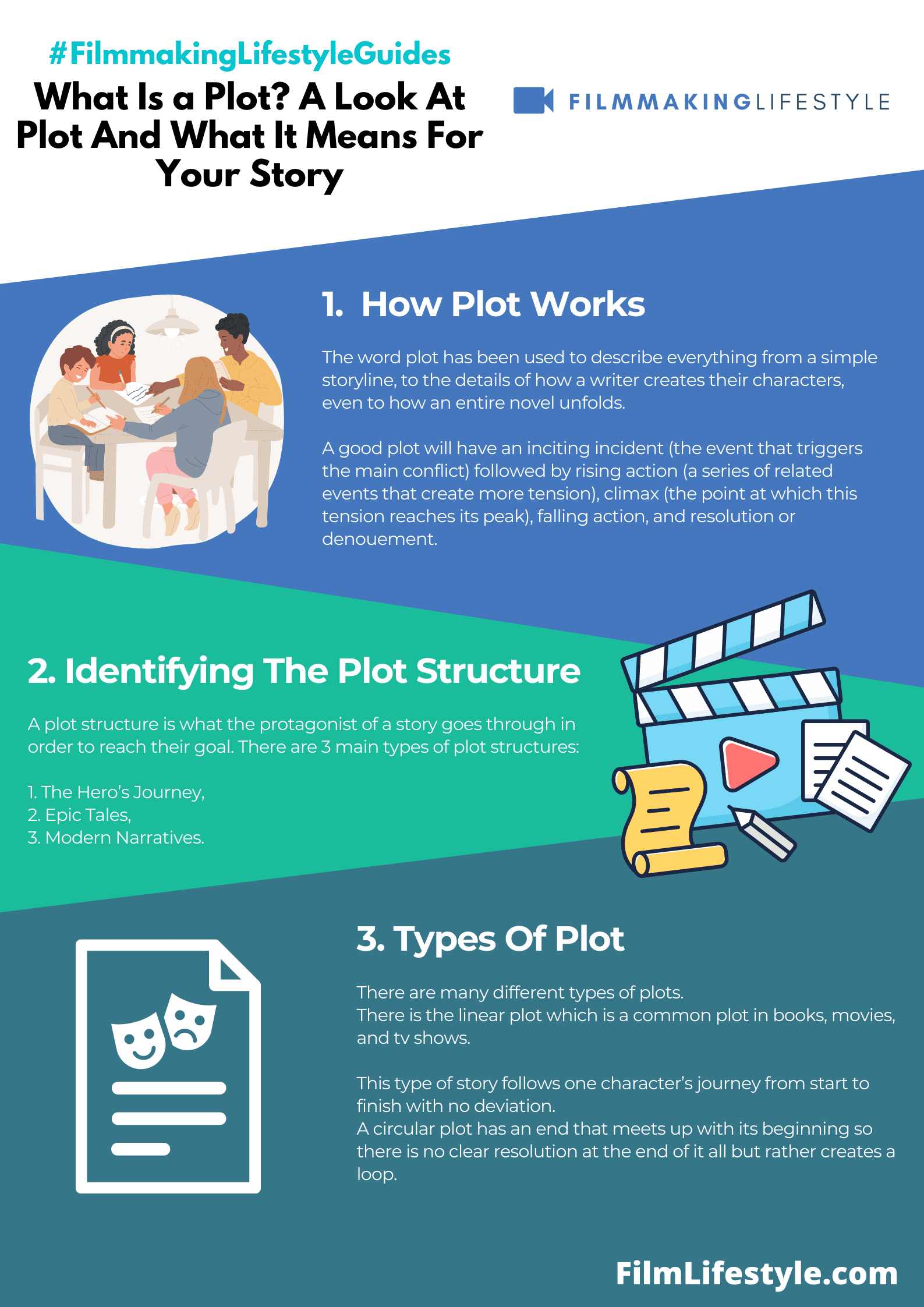
Reaching the climax in a film is akin to arriving at a pivotal mountaintop.
At this stage, all the rising action and tension developed during the story reach their peak.
Characters confront their biggest obstacles and their choices carry the highest stakes.
The outcome of this confrontation is often what audiences are anticipating most.
The climax can manifest in various ways.
Sometimes it’s an epic battle, a heart-wrenching revelation, or a last-second twist that leaves viewers on the edge of their seats.
To ensure the climax is effective, we keep certain elements in focus:
- Crafting high stakes that align with the character’s core goals,
- Amplifying the emotional intensity to maximize audience investment,
- Timing the climax to hit at just the right moment in the narrative arc.
In The Godfather, for example, the climax is not just a physical battle but a moral one.
It’s the point where Michael Corleone’s transformation is complete, marking a dramatic shift in the character’s journey and the film’s direction.
Our approach is to weave the various story threads together in a way that makes the climax feel both inevitable and surprising.
The audience should feel the tension that’s been building up, yet should not be able to predict exactly how the climax will unfold.
Strategies to maintain a gripping climax include:
- Heightening the consequences of the protagonist’s actions,
- Intertwining subplots to converge at the climax,
- Utilizing pacing, music, and cinematography to enhance the scene’s intensity.
By considering these components, we’re able to craft a climax that is not only memorable but also delivers a satisfying payoff to the narrative journey.
Unraveling The Falling Action
Following the climax in any gripping narrative, we encounter the falling action.
This is where the consequences of the climax begin to unfold.
The falling action helps tie up the story’s loose ends – it shows how the characters and the world around them are affected by the outcomes of the story’s peak.
In essence, the falling action serves to bring the story towards its resolution.
It’s a crucial component where the tension falls and the pace slows down.
We see the characters come to terms with the new reality post-climax.
Here, subplots might wrap up and the protagonists may reflect on their journey.
For filmmakers, the falling action is a delicate art.
We strive to maintain audience interest after the high point of the climax.
The falling action must ease viewers into the story’s conclusion without disengaging them.
Choices in pacing, music, and dialogue are decisive here.
Let’s examine some key aspects of effective falling action:
- Resolution of subplots,
- The protagonist’s emotional evolution,
- The tying up of thematic elements.
We often find that the strongest falling actions are those that give audiences space to catch their breath.
Yet they should still feel connected to the characters.
In The Godfather, for example, the falling action allows viewers to see the full transformation of Michael Corleone in the aftermath of the film’s most intense moments.
It’s through the falling action that we set the stage for the final scenes without divulging too much too quickly.
It’s a balancing act – providing enough to satisfy but not so much that the story’s end feels all too abrupt.
Effective falling action guides the audience gracefully towards the story’s resolution, delivering a sense of closure that resonates and lingers.
https://youtube.com/watch?v=8yzY6buMflo
Tying Loose Ends: The Resolution
After the highs and lows of a film’s climax, the resolution is where we begin to wrap up the story.
It’s a critical segment that shows characters’ lives after the storm of the climax has passed.
The resolution is not just about providing a satisfying end, but it also clarifies any remaining questions.
Think of films like The Godfather or Inception – without a proper resolution, their impact wouldn’t be the same.
Viewers expect a transformative journey and the resolution offers a final insight into how the characters have changed.
Here’s what we consider vital in nailing this part of the plot:
- Maintaining a consistent tone with the rest of the film,
- Ensuring all key plot questions are addressed if not earlier in the falling action.
Resolving subplots is just as crucial as the main storyline.
Subplots often enrich the primary narrative and their conclusion should resonate with the overarching theme.
Our job as filmmakers is to leave our audience with something to ponder.
That’s why we carefully craft the resolution to evoke emotions or thoughts that linger beyond the initial viewing.
Displaying the outcome of the characters’ choices provides a sense of finality.
Audiences have invested emotionally and they deserve to see where the characters end up, be it triumph or failure.
The decisions we make about pacing can drastically affect how the resolution is perceived.
Rapid conclusions can feel rushed whereas drawn-out endings might lose the viewer’s attention.
Striking a balance is the key.
We aim to give viewers enough to feel content but retain a bit of mystery.
eventually, every resolution should feel like the turning of a page, offering a new chapter for the characters even if that chapter remains untold.
What Is A Plot – Wrap Up
We’ve explored the intricate tapestry of a plot’s resolution, the final thread that brings coherence to the story’s fabric.
It’s here that we see the power of storytelling shine through, providing a sense of closure that resonates with audiences and leaves a lasting impression.
As we craft our narratives, let’s remember the importance of a well-paced and thoughtful conclusion—one that not only ties up the loose ends but also invites reflection and satisfies the emotional journey of our characters.
Let’s strive to leave our readers and viewers with that poignant sense of completion, the hallmark of any great story.
Frequently Asked Questions
What Is A Resolution In Story-telling?
A resolution is the segment of a story where the plot concludes, answering unresolved questions and showcasing how characters have changed.
It provides closure to the narrative and offers insight into the ultimate outcomes of the characters’ choices.
Why Is Resolving Subplots Important?
Resolving subplots is important because they deepen the overall narrative and need to align with the main theme, contributing to a richer and more comprehensive story experience.
How Can A Resolution Evoke Lingering Emotions Or Thoughts?
A resolution can stir lingering emotions or thoughts by ensuring it resonates with the audience, offering insight into the characters’ journeys, exposing the ramifications of their decisions, and perhaps leaving a subtle hint of mystery for the future.
What Is The Role Of Pacing In A Story’s Resolution?
Pacing in a story’s resolution plays a critical role in providing enough closure without rushing the ending.
It balances the need to wrap up the story satisfyingly while potentially retaining a sense of intrigue or open-endedness.
Should A Resolution Always Have A Sense Of Finality?
While a resolution should offer a sense of finality by displaying the consequence of characters’ decisions, it can also suggest a new beginning or untold chapter, enhancing the story’s depth and engaging the audience’s imagination.
